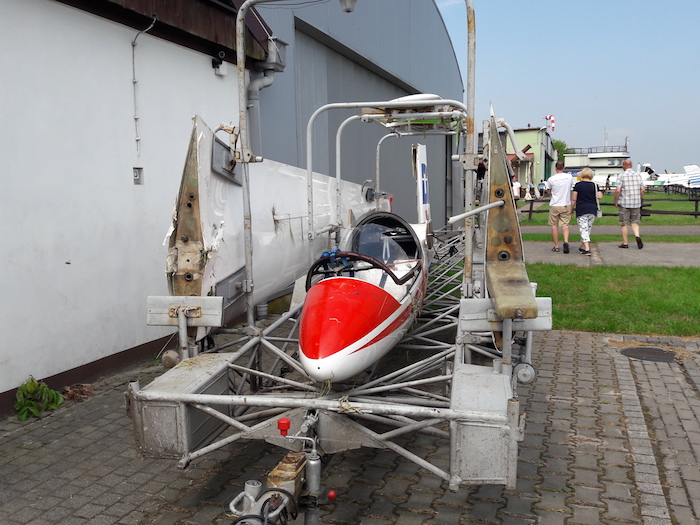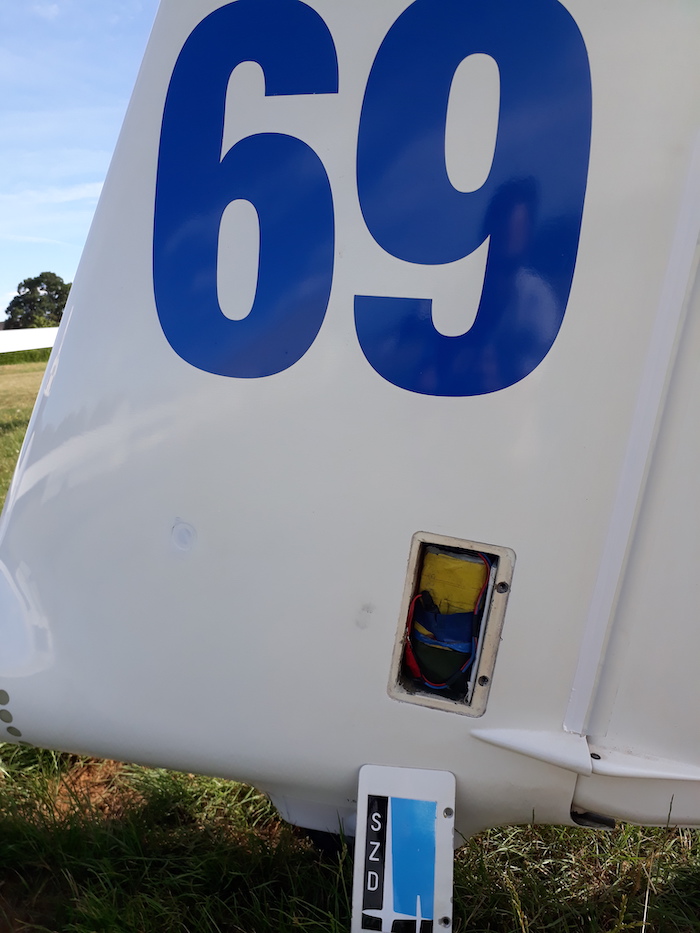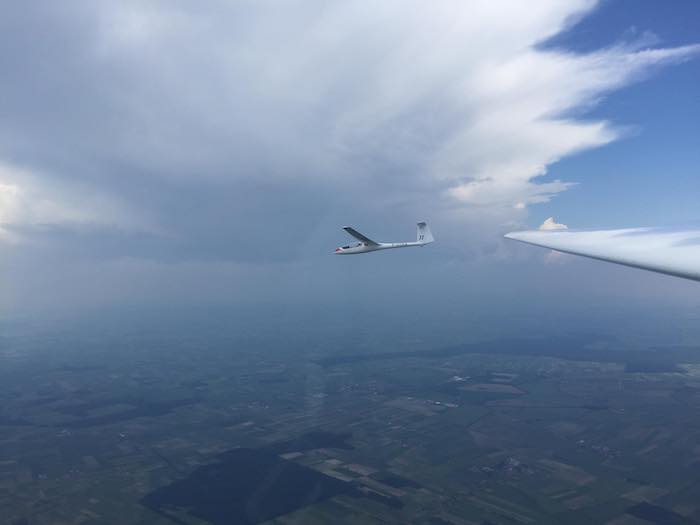Center Of Gravity
Home
Youtube-Channel
About
Shop
Reading on the internet there is a lot of opinion that this-or-that glider is prone to spinning,
stalling or other bad behaviour. There is a lot of anecdotal description with little fact
supporting the opinion. This is a guide based on fact how-to avoid these situations. Spoiler:
Which glider you fly has little to do with it.

Jantar which spun in to the ground from low altitude. Pilot luckily walked away without injury.
Stalling or spinning at low altitude is dangerous, the risk of impacting with the ground is high. This
happens every year, that someone spinns in to the ground and kills them self. Don’t be that person. Competition pilots will often tell you that, for performance, always fly fully back heavy. This is bad advice, just focusing on one effect of flying tail heavy. Further more the performance gain is only, at best, marginaly better compared to flying at a more preferable center of gravity.
There are several easy steps that will lessen the risk close to zero. It can be divided into two
subjects: Glider Mechanics and Piloting Technique. Let’s start and look at glider mechanics.
Glider Mechanics
Reading on the internet there seams like certain gliders are much more prone to spinning/stalling
than others, to the point that they are outright dangerous. This is just not true. There are also
comments that ‘My LS4 is much more prone to spinning than the clubs LS4 because (add some
mytichal reason)’.
There is only one thing that make a huge difference: Center of Gravity. The same glider will feel a
lot different depending if it’s tail or front heavy. The difference is much larger than any other
technical thing that can be altered. This is the reason why two pilots can have such different
impression of the same glider.
A tail heavy glider (still within the gliders spec) can feel outright dangerous to fly while the same
glider is the most gentle in the world when flown with a more centerd CG(center of gravity). I’m a
fairly light pilot and have on occasion flown gliders at their aft most CG and it’s not pleasant. The most striking effects is the lack of nose-down from the elevator during airtow take off, which causes the glider to winch-launch behind the tow plane. The less noticeable effect is that you're not able to bring the tail wheel off the ground before take-off. During a turbulent air tow you frequently push the stick full forward. These are basically lack of control due to too tail heavy.
Why is it like this? The aft most CG is flight tested (by the factory) to fulfil certain levels of control. Has nothing to do with nice behaviour or the like. Also note that the glider is allowed, by the CS-22 certification (CS 22.221 b), to make five full turns before exiting a spin, should it occur. Not very comforting when thermaling low or close to the ground with a tail heavy glider.
So, what should you do? If you are confident to calculate the CG yourself, calculate so that you
have a CG which is 70% back from the forward most location. This is usually a sweet spot for
handling, performance and safety. Don’t experiment with further back, it’s usually diminishing
returns accompanied by a much less nice handling glider.
The easier way of doing it is looking in the cockpit, there should be a max/min pilot weight
placard. Make sure your equivalent weight (your weight + trim weight ) makes you end up in the
middle.
Example:
The placard says 70-110kg, and each lead weight is equal to 5kg pilot weight. If you, like me,
weight 70kg the calculation looks like this:
70kg (me)
6.5kg (parachute)
2.5kg(map, water, snack/food, camera)
= 79kg
I want to be at 90kg so in my case 2 lead weight needs to be put in the nose, giving me an
equivalent pilot weight of 89kg. Close enough.
There is also another reason for not being too close to the aft most CG, the inaccuracy of the
weight and balance. It’s not uncommon for weight and balance to be off by +-5kg pilot weight.
The second mechanical thing to look at is the aileron sealing. This is far less important than
CG but will give you better aileron respons at low speed, thus preventing going in to a spin. A
proper aileron sealing should be air tight by the means of a tape. Normally a golden/brown (which
becomes white after a few years in the sun) teflon tape is used, this works perfectly. Using only
mylar is not as effective.

Fin trimweight location of the SZD55. Is this included in the weight and balance?
Piloting Technique
Most of the serious crashes happens when spinning or stalling at low altitude, impact with the
ground is very lethal. This is usually during landing or out landings especially.
A glider which is flown side-ways or with the air breaks extended have a higher stall speed and is
more prone to spinning/stalling. So, here is a small list of do’s/don’t.
* Only use the air breaks when flying with level wings, retract/lock fully during turns.
* Speed is your friend in the pattern, minimum 110km/h is good for plastic gliders. Add 10 if your
dumping ballast.
* Make a long final: adjust speed and altitude in a straight line towards your landing point.
* Keep speed if crossing forest border on short final.
* Don’t fly side-ways(wing gliding).
* Fly as smooth as possible without sharp turns/corrections, G forces increases the stall speed.
In mountainous terrain it’s common to thermal close to the ground which require you to have a
more precise technique. Please read my article about How-To thermal like a pro. The thing to
focus on is speed-control and keeping the yaw string in the right place. If the yaw string points
inside the turn your flying sideways, it’s much more prone to spinning.
But formost, stay away from the ground. If you can’t, pay extra attention to correct piloting when
close. Safety first.

The right center of gravity and flown correct, Jantar is a well behaving glider.
Summary
No matter your ambition with gliding, get the CG right! It’s a safety matter and also for your
enjoyment of flying. If your an instructor, know that your light weight student must have extra
weight to enjoy her/his solo flight. Learning the right piloting technique will increase your safety
even more and also you enjoyment, as you will climb more easy and be in full control of the flight.
There is a difference between gliders of course, but it’s much less than you might think when
reading on the internet. Ask yourself what differs the most: peoples opinions or aircraft handling?
Support me
I build and maintain this site to help you. I do it in my spare time and it's not free.
I DON'T WANT ADVERTISEMENT on this site. Help me to help you:
Buy me a beer!
© 2018 Niklas Löfgren
|